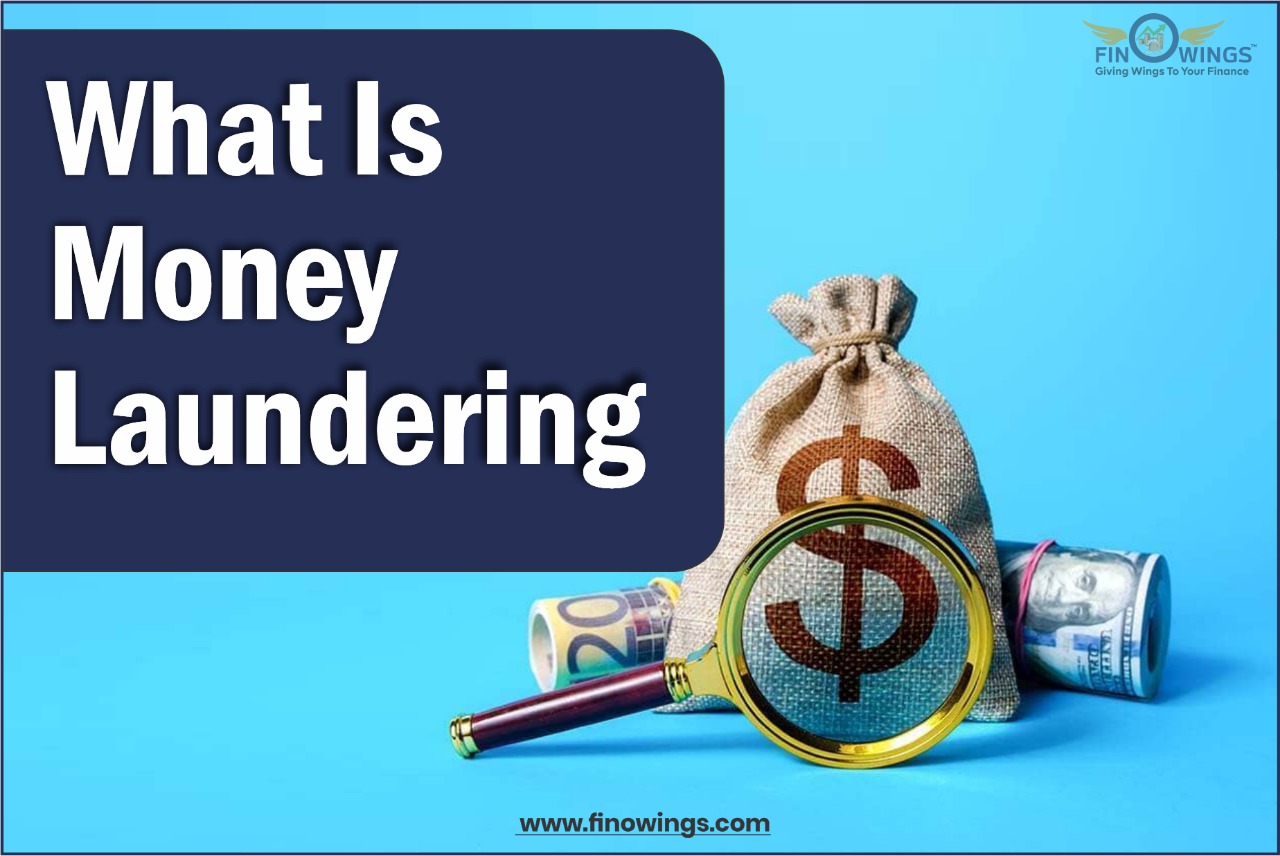Home >> Blog >> What is Money Laundering
What is Money Laundering

Table of Contents
- Introduction
- 1. What is Money Laundering?
- 2. Example of Money laundering
- 3. Variants of Money Laundering
- 4. What Is Electronic Money Laundering?
- 5. Where does money laundering occur?
- 6. How does money laundering affect business?
- 7. What is the connection with society at large?
- 8. Prevention of Money Laundering
- Conclusion
Introduction
Money-transfer fraud When there is a significant amount of black money, one of the illegal actions that emerge is hiding the source of those monies.
1. What is Money Laundering?
Financial institutions are frequently involved in money laundering to enable the money to appear to have come from a legitimate source. A money launderer will deposit tiny amounts of money over time at a bank rather than a large quantity all at once to prevent attracting notice. It is possible to transfer money obtained unlawfully to a nation where money laundering regulations are less strictly implemented, although doing so frequently necessitates transporting cash over international boundaries.
The procedure for Money Laundering
Placement, layering, and integration are the 3 phases in the laundering of money process.
-
Placement: At this point, the money launderers inject the stolen funds into the economy. This is commonly done by depositing money into a bank account connected to a middleman in business or an unidentified firm.
-
Layering: The money pumped through placement is shifted or spread out over numerous transactions in various accounts of the same nation and other countries with less severe anti-money laundering regulations, proving it challenging to identify the source.
Layering the wealth can also entail transactions, including buying tradable goods, pricey vehicles, artwork, and real estate.
-
Integration: When such well-placed and well-layered funds are once more incorporated into the financial system, they get around the law by making it seem like they came from legitimate sources after losing their initial connection to criminal conduct.
The criminal could create a fake charity where they would be lavishly compensated to serve on the board of directors. Alternatively, they could use this clean money to establish a real business and demand payment by issuing bogus invoices.
A real company set up to boost daily revenues is called a "front." The organization blends its illegal and legal finances to conceal the source of the dirty money. The company blends legal and illegal profits into one set of reported earnings, making it difficult to distinguish between them.
2. Example of Money laundering
A couple needs a method to hide their income source because they make a lot of money trafficking drugs. They choose to use the illicit funds to start a restaurant. They inflate their claimed income daily whenever they record it in the books. Over time, the couple's drug money gets subsumed into their legitimate income, and they are then free to begin spending the money without explaining how they got it. As a result, money from drug sales has been cleaned up.
3. Variants of Money Laundering
Smurfing commonly referred to as "structuring," is a typical type of money laundering. To prevent being caught, the thief divides huge sums of money into numerous little contributions and frequently disperses them among numerous accounts. Currency exchanges, wire transfers, and "mules," or cash smugglers who carry huge sums of cash over borders and deposit them in international banks wherever money-laundering regulation is less stringent, are other money laundering methods.
Other ways to launder money include:
-
investing in goods that can be readily transported to other jurisdictions, including gold and gemstones;
-
discretely purchasing and reselling priceless possessions like homes, automobiles, and boats;
-
Casino gambling and money laundering;
-
Counterfeiting; and
-
Creating fake corporations (dormant firms or corporations that effectively exist only on paper).
4. What Is Electronic Money Laundering?
The Internet has given old crime a fresh look. Peer-to-peer (P2P) mobile phone transfers and untraceable electronic transaction technologies have made it more and more difficult to identify prohibited financial activities. Additionally, using proxy servers and anonymizing software, integration's third component of money laundering, can be carried out with little to no evidence of an Internet protocol (IP) address.
Additional ways money can be laundered include digital gaming platforms, gambling websites, and online auctions and sales. Illegally obtained funds are turned into digital currencies and returned to real, useable, and untraceable "clean" funds.
Electronic money laundering is the latest frontier in digital currencies like Bitcoin. They are not completely secret, but due to their greater secrecy compared to more traditional forms of cash, they are progressively being utilized in extortion operations, the drug trade, and other illegal operations.
5. Where does money laundering occur?
Money laundering can happen anyplace in the world because it is a byproduct of almost all crimes with a monetary motive. Because they incur a lower risk of being caught, money launderers frequently target countries or sectors with weak or inadequate anti-money laundering initiatives. The activity aims to return the illegally obtained monies to their source; money launderers frequently choose to transfer money through safe banking institutions.
Depending on the level the funds have achieved during the laundering process, money laundering operations may also be geographically focused. For instance, at the placement stage, the funds are typically managed near the underlying activity—often, but not always, in the nation from whence they were raised.
The launderer may choose any site with adequate financial or commercial infrastructure, such as an offshore financial centre, a prominent regional business centre, or a global banking centre, for the layering step. At this stage, the money that has been laundered may also only transfer via bank accounts in various locations where it is acceptable to hide its location of origin and ultimate destination.
Last but not least, during the integration phase, launderers may choose to invest funds in additional locations if they come from shaky economies or countries with limited investment possibilities.
6. How does money laundering affect business?
The notion that the banking and financial services industry operates within a system of significant legal, regulatory, and ethical norms is crucial to maintaining the market's integrity. Among a financial institution's very precious assets is its image of integrity.
A specific organization could be drawn into active collaboration with criminals and are becoming a part of the criminal system itself if funds from a criminal action can be analyzed through it with ease, whether even though its staff members or directors have been bought off or because the organization ignores the criminal nature of such funds. Moreover, proof of this collaboration will negatively impact the opinions of regulatory agencies, other financial institutions, and regular consumers.
One can point to unexplained shifts in money demand, prudential risks to bank soundness, pollutant impacts on legitimate monetary operations, and rising volatility of global capital flows and exchange rates due to unforeseen cross-border asset transfers as possible negative macroeconomic impacts of unchecked money laundering. Moreover, effective money laundering also harms the honesty of the whole society and weakens democracy and the rule of law since it promotes corruption and criminal activity.
7. What is the connection with society at large?
Money laundering could have major social and political repercussions if not stopped or handled inadequately. For example, organized crime can take over banking firms, invest its way into managing significant economic sectors, corrupt public servants, and even entire governments.
Criminal organizations' economic and political clout can erode society's social cohesion, normative values, and democratic institutions. This illegal impact can impede the transition to democracy in nations that are doing so. Most essentially, the underlying criminal action that gave rise to money laundering is intrinsically related to it. Money laundering makes it possible for crime to continue.
8. Prevention of Money Laundering
In recent decades, authorities across the globe have intensified their initiatives to combat money laundering, enacting laws requiring banking firms to set up systems to identify and report unusual activities. However, the money required is a considerable sum. The United Nations Office estimates global money-laundering exchanges on Drugs and Crime to be worth between $800 billion and $2 trillion yearly, or between 2% and 5% of the world's gross domestic product (GDP). However, it is challenging to calculate the exact amount due to the clandestine nature of money laundering.
The Group of Seven (G-7) founded the Financial Action Task Force (FATF) as a non-governmental organization in 1989 to fight money laundering on a global scale. Its scope was widened to include preventing the financing of terrorists in the early 2000s.
In 1970, the Bank Secrecy Act was enacted in the United States, obliging financial institutions to disclose specific transactions to the Department of the Treasury on a suspicious activity report (SAR), such as cash transactions exceeding $10,000 or any other that they find suspicious. Additionally, the Financial Crimes Enforcement Network (FinCEN), which utilizes the information banks provide to the Treasury Department, may share it with domestic criminal investigators, international organizations, or foreign financial intelligence units.
Although these regulations were useful in identifying criminal conduct, the Money Laundering Act of 1986 was the first to make money laundering unlawful in the United States. The USA Patriot Act, which was passed shortly after the terrorist attacks of September 11, 2001, increased money-laundering operations by permitting the use of investigative techniques intended to combat organized crime and drug smuggling in terrorism cases.
Conclusion
Money laundering is popular despite being prohibited. Additionally, the lack of investigation due to technological advancements has furthered the issue of money laundering. Therefore, considerable techniques and strategy changes are required to combat money laundering.
Author
Frequently Asked Questions
The practice of "cleaning" dirty money obtained via criminal activities including drug-related activities, embezzlement, and terrorist support by passing it through legitimate organizations is known as money laundering. Financial offenders attempt to avoid detection in this manner by passing off their illicit funds as legitimate profits.
The conventional methods of money laundering, such as mules, shell companies, and smurfing. Other strategies involve investing in diverse assets including real estate, trading commodities, betting, and counterfeiting.
Criminals employ the practice of money laundering to cover up the unlawful source of their revenue. Money is "cleaned" of its illegal origin and made to seem like legitimate company profits by moving via intricate transfers and transactions, or through a network of organizations.
















